
The History of Turkish Cuisine
In Turkey, there is a diverse and rich food culture that owes itself to the produce from the vast lands that the Turks have lived on throughout history.
Central Asia - The Historical Homeland of the Turks
Since the Neolithic era, in Central Asia, the nomadic Turks lived on a simple diet of meat, yoghurt, and wheat-based dishes, and made their living by rearing livestock. But when their living conditions took a turn for the worst, they made their historical move to Anatolia, where the Seljuk state was formed.
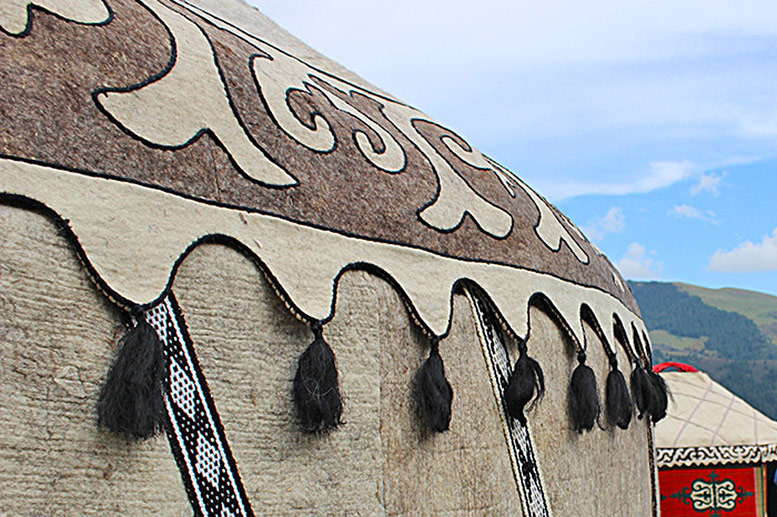
In Anatolia, new and different ingredients were discovered by the Turks which led to the cooking of a more varied diet and the use of new cooking methods.
The Seljuk Era
Much was recorded about 11th century Turkish cuisine, including the fact that the Seljuks enjoyed great feasts and the table manners and etiquettes that were observed between the young and old.

The Seljuk Phase of Turkish Cuisine
One of the most famous dishes consumed by the Seljuks was a soup known as Tutmaç, as well as meat dishes, mostly made with mutton or lamb. In this era, horse meat consumption was on the decline, and other foods such as chicken, fish, rabbit, and deer were not preferable.
Milk-based products such as yoghurt, cheese, butter, and clotted cream were consumed regularly and honey was also very important.
It is well known that the Turks have specialised in baked bread and wheat products throughout history. They also used several types of vegetables and fruits were also used to make desserts, molasses as well as sherbets, which were a popular beverage of the time.
The Ottoman Empire

The demise of the Anatolian Seljuks led to the establishment of the Ottoman Empire, and what became the foundation for modern-day Turkish cuisine.
In the 13th century, the kitchen was regarded as a significant place by the Mevlanas of Sufi mysticism, so much so that budding members of the Dervish lodges faced tests and trials of patience and tolerance within the kitchen itself.
Starting off with a rather refined diet, Turkish culinary techniques evolved throughout the reign of the Ottomans, and the once modest tables evolved into elaborate feasts and banquets.
After Sultan Mehmet II, also known as Mehmet the Conqueror, conquered Constantinople (which is now known as Istanbul) in 1453, he focused his attention on the culinary affairs of his palace and new ingredients such as fish and seafood were introduced into the Ottoman diet.
The Ottoman Kitchen
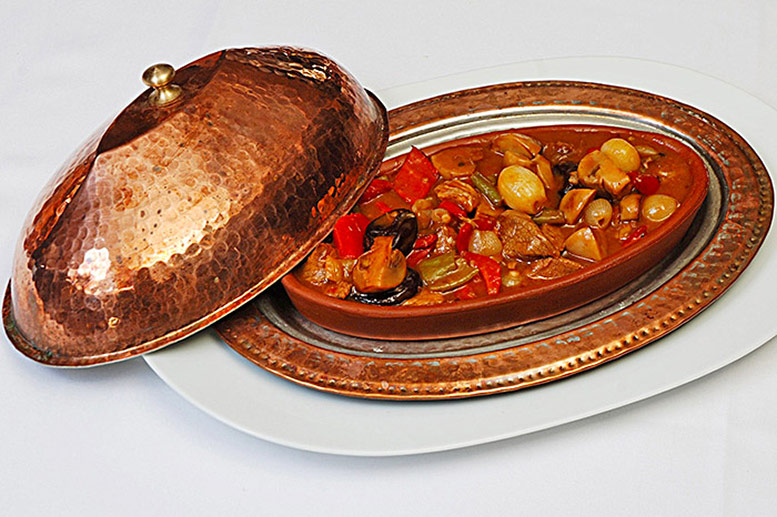
The kitchens of the grand Ottoman palaces were vast, with workforces consisting of numerous chefs and hundreds of apprentices.
The kitchen brigade was a highly respected element of Ottoman palace life. Not only were the elaborate meals enjoyed and savoured by all those who had the pleasure of eating them, but the Palace cuisine also indicated the affluence of the Sultan and the Ottoman Empire, which sent a direct message to their allies as well as their enemies.
Before the Empire and throughout, the Ottoman Turks ate with spoons or their right hands, on the floor around a large tray that was placed on a cloth. However, towards the end of the Empire in the 19th Century, the Ottomans changed their eating habits in order to improve their relationships with their Western allies, in an attempt to make the Empire thrive once again. Especially for dining with their foreign counterparts, they made changes such as sitting on chairs at a dining table and eating with knives and forks.
Neighbouring Cuisines on Ottoman Lands
Due to the enormity of the Ottoman Empire, the climates and natural products of each region affected the types of foods that were prepared.
Regional differences in cuisine were also affected by the cultures and religions of local folk. In particular, meat dishes would not be made with pork by the Muslims and meat would be avoided altogether on the fasting days of the Christians.
Also, certain dishes that one region would prepare for weddings and festivities, would usually be consumed at funerals in another.
That said, there were many dishes that were a common point and could be found throughout the various parts of Turkey and the Empire. One example is the sweet dish; Aşure, also known as Noah’s pudding. Aşure could be one of the oldest known recipes on the planet as it was originally made with the leftover ingredients on Noah’s Ark after the flood.
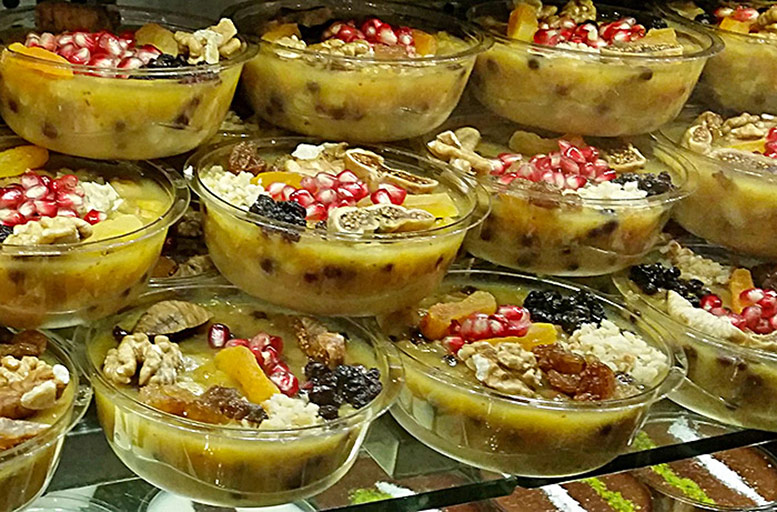
The Ottoman Phase of Turkish Cuisine
From 1299 to 1923, there was an immense advancement of culinary practices during the era of the Ottomans. From what was a more basic diet than that of the Seljuks, came a great development of Turkish cuisine and the kitchens that it was prepared in.
It was known even in the 13th century that the palace kitchens consisted of bread makers, yoghurt makers, pickle makers as well as helva and dessert makers.
The Influence of Turkish Cuisine
In modern times, it is a well-known fact that the Mediterranean diet is one of the healthiest ways of eating. In fact, from the Mediterranean to the Middle East, the consumption of olive oil, yoghurt, fish, and lamb has developed into a lifestyle with numerous health benefits.
From 1453 to 1650 especially, the Ottoman Empire influenced the cuisine of regions as far as Egypt and had a massive impact on regions such as Greece and Lebanon even up until 1909. Because of this, we can still see many similarities within the gastronomical fare of each country, a few classic examples include the filo pastry delicacy known as baklava, as well as the use of grapevine leaves and rose water in cooking.
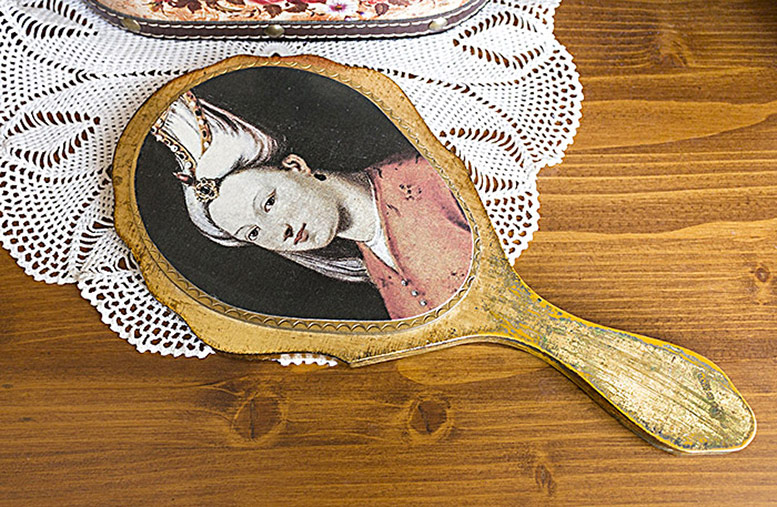
Not only did the Ottoman Empire have a great influence on the cuisines of neighbouring regions, but the Turkish diet itself was greatly influenced by the culinary knowledge that the Ottomans brought back from the areas that the Empire had expanded to.
The Republic of Turkey
In 1923 came the establishment of the Republic of Turkey and Turkish cuisine became separated into two different categories, they were regional folk cuisine and classical Turkish cuisine. The latter of which reflected the culinary delights of the Ottoman palaces and is the basis of the Turkish food we know and love today. Regional folk cuisine reflects the food culture of the different regions of Turkey and the ethnic backgrounds of their inhabitants.

The Republic Era of Turkish Cuisine
With the fall of the Ottoman Empire, it left behind its culinary legacies such as the traditional Ottoman recipes for kebabs, stuffed vegetables, and yoghurt dishes in the surrounding countries.
On the other hand, with the new relationships between Turkey and the Western world, the Turks started to incorporate the delicacies of international kitchens, such as French cuisine, into their menus. Although traditional Turkish recipes were still well protected and passed down through the generations within the Turkish homes.

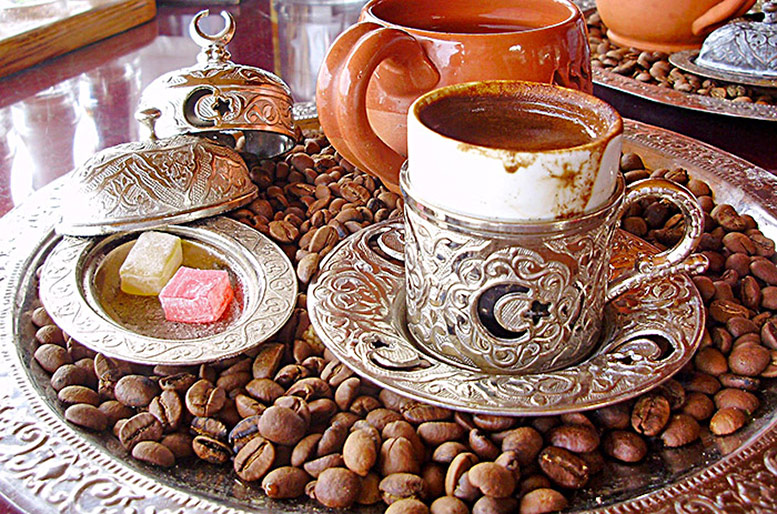
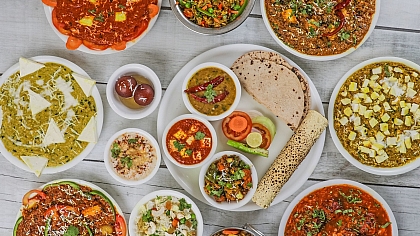
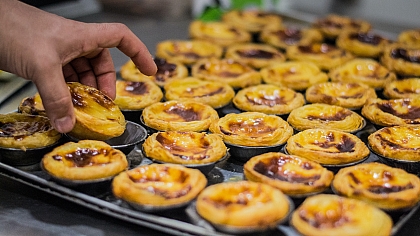
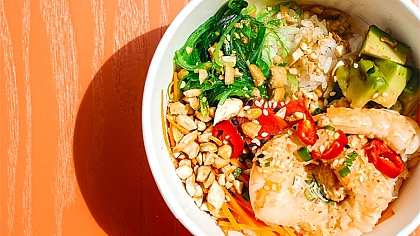
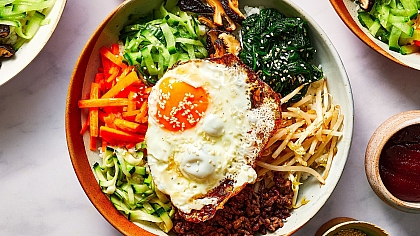

COMMENTS
Wonderful article. Thanks for showing the greatness of the Turkish cuisine.
Lovely article mashallah i hope to read more articles inshallah